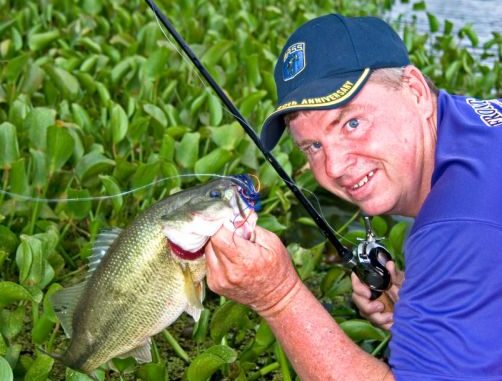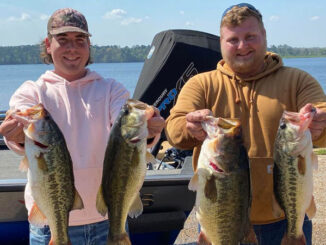
Accomplished tournament angler shares keys to success
Jigs were once thought of as primarily cold-weather lures, but anglers have proved over the past decade or so the baits will produce bites even in the heat of summer.
But a lot of fishermen struggle to master jig fishing. Baton Rouge’s Ken Sherman, on the other hand, won lots and lots of money with that lure tied to the end of his line before giving up competitive fishing.
Here are his tips to catch more fish:
1) Just stop it — Sherman can fish a jig quickly, firing it to target after target in quick succession. What he doesn’t do is pop the lure up and down, up and down before moving it.
“The biggest mistake people make is that most of them saw on the jig too much,” Sherman said. “Let it sit. Just let it sit.”
2) Slack off — Another mistake many anglers make is trying to keep their line taut while the lure falls. This, Sherman said, changes how the lure looks in the water and ultimately leads to fewer bites.
“On the fall, I’m going to fish slack line,” he explained. “I want it to fall naturally.”
Even when the jig settles to the bottom, the proven tournament angler leaves some slack.
“I’m going to give it a little slack, and then I’m watching the line,” Sherman said.
3) Eagle eye — That brings us to one of the most-difficult aspects of jig fishing: The strike often can’t be felt. So it’s imperative that the angler watch his line carefully.
“I’m looking for the line to move, twitch, do anything different,” Sherman said.
And the evidence of a bite can be minute.
“Do you know how long it took me to learn that?” Sherman chuckled.
4) Ring the bell — Sherman isn’t convinced rattles are critical to success, but he always fished them.
“I think that clicking mimics the crawfish,” he said. “When (the jig) hits the water, I’d (shake) it twice and let it fall.”
That shaking activates the rattles to alert nearby fish, and the natural fall of the lure on slack line drives bass to eat.
5) The right weight — Sherman used jigs weighing anywhere from 3/8 ounce to 1 ounce, but he only up-sized when he absolutely had to.
“You use the weight (required by) the conditions you’re fishing,” Sherman said. “If you can get away with 1/2 ounce, us a 1/2 ounce.
“A lot of people will be like, ‘Look at me, I’m using a huge weight because I’m punching.’ You don’t have to go to heavy weights.”


